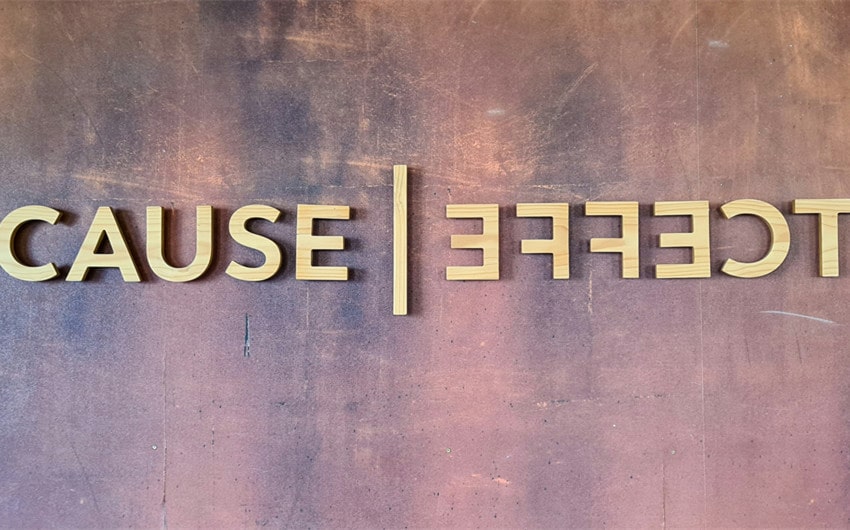Understanding the Basics of a Causal Relationship in Life
We encounter cause-and-effect situations in everyday life, from the food we eat affecting our health to how our actions influence outcomes. A causal relationship is when one event directly leads to another, such as how exercising regularly improves fitness.
Understanding these relationships is essential, not only in science and research but also in making better decisions in our daily lives. In this article, we’ll explore what makes a relationship causal, how it differs from correlation, and why it’s important to recognize these connections in everything from health to the environment.
What is a Causal Relationship?
A causal relationship occurs when one event (the cause) directly influences another event (the effect). This type of relationship implies that a specific action or occurrence is responsible for causing a particular outcome. In simple terms, if the cause happens, then the effect follows.
For example, if you water a plant regularly (cause), the plant grows (effect). The watering is directly responsible for the plant’s growth, making this a causal relationship. In contrast, if we observe two events happening together without one necessarily causing the other, we are looking at correlation, not causation.
Distinguishing Causal Relationship from Correlation
It’s easy to confuse a causal relationship with correlation, but they are fundamentally different. Correlation refers to a situation where two things occur together, but one does not necessarily cause the other. For example, ice cream sales and drowning rates tend to rise simultaneously in the summer, but buying ice cream does not cause drowning incidents. This is a correlation, not a causal relationship.
To establish causality, there must be clear evidence that the cause leads directly to the effect. In a true causal relationship, the cause must happen before the effect, and alternative explanations for the effect must be ruled out. For example, scientific studies show that smoking leads to lung cancer, establishing a clear causal link between the two.
Why Understanding Causality Matters
Recognizing causal relationships is essential in various areas of life, including science, health, economics, and decision-making. Knowing whether one factor causes another allows us to take meaningful actions. For instance, knowing that regular exercise improves cardiovascular health means you can make lifestyle changes to stay healthy.
Key Components of a Causal Relationship

Establishing a causal relationship requires meeting certain conditions to demonstrate that one event directly causes another. These components ensure that the relationship between cause and effect is not simply a coincidence or a result of other factors. In any causal relationship, three essential elements are present: cause and effect, temporal precedence, and the elimination of alternative explanations.
1. Cause and Effect
The most fundamental aspect of a causal relationship is the direct connection between the cause (an event or action) and the effect (the resulting outcome). For a relationship to be causal, the effect must occur because of the cause, not independently of it.
For example, if a student studies for an exam (the cause), their performance improves (the effect). Here, studying leads directly to a better outcome, making the relationship causal. The connection is clear: without the cause (studying), the effect (improved performance) is less likely to happen.
It’s important to note that a cause does not guarantee an effect in every case. However, it significantly increases the likelihood of the effect happening.
2. Temporal Precedence
For a causal relationship to be valid, the cause must precede the effect in time. This is known as temporal precedence—the idea that the cause must occur before the effect. If the effect happens before the supposed cause, then it’s impossible for the relationship to be causal.
For instance, if someone claims that their fitness improved before they started exercising, this would violate the principle of temporal precedence. The cause (exercise) must happen before the effect (improved fitness) for it to be considered causal.
Temporal precedence ensures that the sequence of events is logical. Without this element, it becomes difficult to determine whether the relationship is causal or merely coincidental.
3. Elimination of Alternative Explanations
Even when cause and effect appear related, other factors might influence the outcome. To establish a true causal relationship, it is essential to eliminate alternative explanations or confounding variables that could be responsible for the effect.
For example, if a person starts eating healthier and exercising at the same time and then notices weight loss, it’s difficult to pinpoint which factor caused the weight loss. Did the exercise lead to the result, or was it the improved diet? Both could be responsible. In this case, the causal relationship can only be confirmed if other potential causes (such as diet or metabolic changes) are accounted for.
In scientific research, this is often controlled through experiments where variables are isolated to test for causality. In everyday life, understanding and accounting for potential external factors ensures that you aren’t mistaking correlation for causation. By ruling out other possible causes, you can confidently identify the true cause of an effect.
Types of Causal Relationships

Causal relationships come in different forms, depending on how the cause and effect interact. While some are straightforward and direct, others are more complex and involve multiple factors or intermediary steps. Understanding the different types of causal relationships allows us to identify how various elements influence outcomes, and it provides a clearer picture of cause-and-effect dynamics. Below, we explore three main types of causal relationships: direct, indirect, and complex.
1. Direct Causal Relationships
A direct causal relationship is the simplest and most straightforward type of causality. In this case, one event or factor directly leads to a specific outcome, without any intermediary steps or influences. The cause and effect are clearly linked, and removing the cause usually prevents the effect from occurring.
Examples of direct causal relationships:
- Smoking and Lung Disease: Smoking tobacco is a direct cause of lung disease, such as lung cancer or chronic obstructive pulmonary disease (COPD). The harmful chemicals in cigarettes damage lung tissue, leading to these health conditions.
- Exercise and Improved Fitness: Engaging in regular physical activity (cause) directly leads to improved cardiovascular fitness and muscle strength (effect). The more consistently someone exercises, the more noticeable the benefits.
- Sun Exposure and Sunburn: Prolonged exposure to the sun without protection (cause) leads directly to sunburn (effect). The UV rays damage skin cells, causing redness and discomfort.
In a direct causal relationship, the link between cause and effect is easy to observe and typically does not involve external variables or conditions.
2. Indirect Causal Relationships
In an indirect causal relationship, the cause leads to the effect through one or more intermediary steps. While the cause still contributes to the outcome, the path from cause to effect is more complex, often involving additional variables or factors. Indirect relationships are common in scenarios where multiple events or influences work together to produce the final outcome.
Examples of indirect causal relationships:
- Poverty and Poor Health: Poverty may not directly cause poor health, but it contributes to factors like malnutrition, limited access to healthcare, and unsafe living conditions, which ultimately result in worse health outcomes. Poverty (cause) leads to intermediary factors (poor diet, lack of healthcare), which then cause poor health (effect).
- Education and Economic Success: A person’s level of education may not immediately result in economic success, but higher education often leads to better job opportunities and higher earnings. The indirect relationship occurs through the increased skills and qualifications acquired during education (intermediary), which then lead to better job prospects and financial stability.
- Advertising and Consumer Behavior: Advertising doesn’t always directly cause people to buy a product, but it influences brand awareness and consumer perceptions, which in turn make people more likely to purchase the product later on. The causal relationship here is indirect: advertising (cause) affects attitudes and awareness (intermediary), which then influence purchasing decisions (effect).
Indirect causal relationships often require a deeper understanding of the factors and processes that bridge the gap between cause and effect. Identifying the intermediary steps helps explain why an outcome occurs, even if the connection isn’t immediately obvious.
3. Complex Causal Relationships
Complex causal relationships involve multiple causes interacting with each other to produce an outcome. In these situations, several factors contribute to the effect, and the removal or modification of one cause may not entirely prevent the effect. Complex causality is common in areas like social sciences, economics, and environmental science, where systems are influenced by numerous interconnected elements.
Examples of complex causal relationships:
- Climate Change: Climate change is a classic example of a complex causal relationship. It is not caused by a single factor but by a combination of factors, including deforestation, greenhouse gas emissions, industrial pollution, and fossil fuel consumption. All of these causes work together to contribute to the overall warming of the planet, leading to effects like rising sea levels, extreme weather, and environmental degradation. Because of this complexity, addressing one cause (e.g., reducing fossil fuel use) may help mitigate climate change but won’t fully resolve the issue without addressing the other contributing factors.
- Heart Disease: Heart disease often results from multiple causes, including poor diet, lack of exercise, smoking, genetics, and high-stress levels. Each of these factors contributes to the likelihood of developing heart disease, but addressing one cause (e.g., improving diet) doesn’t guarantee prevention if other contributing factors (like smoking or genetic predisposition) are still present. The complexity of heart disease requires a holistic approach to managing risk factors.
- Social Inequality: Social inequality is a complex problem with multiple causes, including historical factors, economic disparities, unequal access to education, and systemic discrimination. These causes interact with one another to create a web of inequality that affects people’s opportunities and outcomes in life. Addressing social inequality requires tackling various causes simultaneously, such as improving education, reforming economic policies, and combating discrimination.
In complex causal relationships, it’s often difficult to isolate one specific cause, and solutions typically require a multi-faceted approach that addresses multiple contributing factors. These relationships highlight how interconnected systems can be and how changes in one area can ripple through to affect other outcomes.







